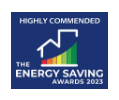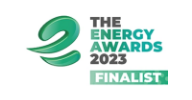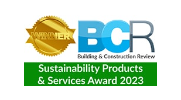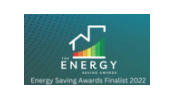As a leader in the design and supply of solar thermal applications for the commercial built environment, Adveco looks at why the technology remains one of the best ways to decarbonise hot water without driving up operational costs.
Solar thermal applications deploy panels with fluid that captures and efficiently transfers solar energy as heat indirectly to the domestic hot water (DHW) system. As a high-temperature renewable source of DHW, Adveco solar thermal lends itself to working in conjunction with not only conventional gas heating but also other renewable technologies including Adveco’s air source heat pumps which can be used to provide pre-heat to solar thermal. This enables a variety of bespoke, hybrid applications to be considered to meet the varied demands of commercial buildings.
Whether a commercial hot water system uses gas or electricity, it will require a preheat source to reduce carbon emissions.
As a rule of thumb, new builds will invariably default to heat pumps. In contrast, properties with an existing gas connection will see greater advantages from the installation of solar thermal which can be extremely effective in reducing reliance on the gas boiler. Even so, offsetting costs in direct electric systems through use of solar thermal applications remains extremely advantageous.
Neither heat pumps nor solar thermal technology currently offers a standalone response for the year-round high temperatures, high volume and peak demands seen in commercial systems. Solar thermal can be combined with a heat pump (which is used to supply initial preheat) to top up heat to a minimum of 60°C required for commercial applications without using direct electric immersions.
A more compact alternative to solar PV for DHW, solar thermal is extremely advantageous where roof space is at a premium due to competition with other heating and ventilation systems on a project. This is especially true of urban projects where solar thermal’s silent operation is also desirable.
Whichever approach is chosen, making an accurate assessment of the needs and limitations of a building first is critical for the correct sizing of the solar thermal system.
Solar Thermal Applications For Carbon Reduction & Significant savings on Running Costs
A commercial system sized to support an occupancy of 50 will typically require 12-24 Rugged 2.24 m² flat plate collectors, whilst smaller systems servicing up to 12 occupants will employ just three to four panels.
Sized and installed correctly, each Adveco solar thermal collector can contribute up to 1400kWh per annum, providing electricity savings of £300 and more importantly reducing emissions of CO² by 322kg.
To ensure system longevity and return on investment, fluid within the solar collectors must be correctly managed. If left in the panel it can overheat, stagnate and leave collectors irreparable. Adveco solar thermal systems avoid this by incorporating drain back into all its solar system designs. This gravity flow approach reduces pump capacity requirements and energy use of the pump station to a minimum and will automatically drain fluid if power is cut without the need for working components. This makes solar thermal systems with drainback low maintenance with long operational lifespans. Fluid refresh is, on average, required every eight years but may last much longer.
With more than 800 systems deployed across the UK, Adveco’s solar thermal applications are an effective renewable which today offers clear cost savings for more rapid return on investment and a proven path to incorporating sustainability into the annual operation of commercial properties.
Discover more at commercial solar thermal hot water systems.













